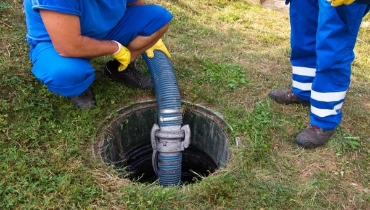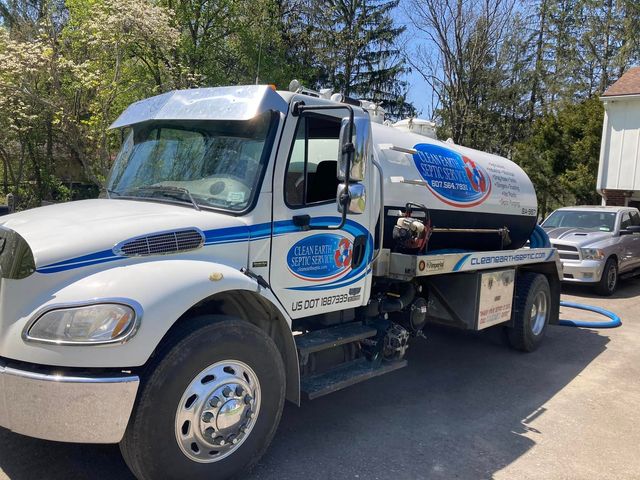4 Simple Techniques For Stillwell Septic And Grading
Table of ContentsSome Known Factual Statements About Stillwell Septic And Grading The Of Stillwell Septic And Grading10 Simple Techniques For Stillwell Septic And GradingThe Ultimate Guide To Stillwell Septic And GradingHow Stillwell Septic And Grading can Save You Time, Stress, and Money.The Ultimate Guide To Stillwell Septic And GradingThe Main Principles Of Stillwell Septic And Grading

Home owners need to additionally inform themselves on the essentials of septic systems to ensure they make notified choices throughout the installment process - Septic Inspection. Septic systems are an essential component of numerous homes that are not attached to a municipal sewer system. They are made to treat and take care of home wastewater on-site
The septic container is a huge, below ground container made of concrete, fiberglass, or plastic. The tank divides the strong waste from the liquid waste.
Stillwell Septic And Grading - An Overview
It is likewise important to save water and prevent overloading the system. Straightforward measures such as fixing dripping taps and toilets, mounting low-flow showerheads and commodes, and spreading out washing tons can assist lower water use and expand the life of the septic system.
The topography of the website is additionally reviewed to ensure that the septic tank is installed at the proper altitude. https://www.domestika.org/en/stillwellsag. The system should be installed at a higher altitude than the surrounding area to stop contamination of the surrounding setting. Setbacks are the minimum distances required by law in between the septic system and various other structures or attributes such as wells, buildings, and home lines
The altitudes will ensure that the septic system works effectively, and wastewater is properly dealt with. It makes sure that the septic system is set up in the most ideal area, taking right into consideration the soil, topography, and setbacks.
The Main Principles Of Stillwell Septic And Grading
Prior to installing a septic container, homeowners require to get licenses and abide with regulations. Some of the licenses and laws that house owners need to take into consideration include:: Home owners need to acquire an authorization from the regional wellness department or structure department before setting up a septic system.
Some districts may need a minimal whole lot size for septic system installation.: Property owners need to abide with ecological laws when setting up a septic system. https://slides.com/stillwellsag. Some states may need an environmental effect evaluation before installing a septic system.: Homeowners need to conform with building and construction laws when mounting a septic system.
Some Ideas on Stillwell Septic And Grading You Should Know
Some towns might call for periodic examinations and pumping of the septic tank. It is critical for house owners to obtain permits and conform with laws before installing a septic system.
One of the most crucial aspects to consider when selecting a septic system is the size. A septic system that is as well small for the home's needs will need even more constant pumping, while a container that is also large can result in extreme water build-up and possible system failing. A general guideline is that the tank needs to have the ability to hold a minimum of 2 days' worth of wastewater.
The 7-Second Trick For Stillwell Septic And Grading

Plastic storage tanks are budget-friendly and light-weight, but they might not be as durable as various other materials and can be vulnerable to splitting. It's also important to think about the sort of system the septic system will be made use of with. There are two primary kinds of septic tanks: gravity and pressure. Gravity systems rely upon the natural circulation of wastewater to move via the system, while pressure systems Septic Tank Installation make use of a pump to relocate wastewater with the system.
The Main Principles Of Stillwell Septic And Grading
On the whole, picking the ideal septic tank for a home is a crucial decision that calls for cautious consideration. Before installing a septic tank, homeowners should take specific actions to prepare for the installment process.
Here are some important precaution to adhere to: Put on safety gear: House owners need to put on protective equipment, such as handwear covers, boots, and headgears, to stop injury throughout the installment process. Prevent electrical lines: Property owners must prevent digging near electrical lines to stop electrocution. Usage caution when running heavy equipment: Property owners should use care when operating heavy machinery to avoid accidents and injuries.
What Does Stillwell Septic And Grading Mean?
By adhering to these necessary actions, property owners can make sure a successful septic tank setup process. Sewage-disposal tank setup is a critical procedure that needs mindful preparation and implementation. Homeowners who are setting up a septic storage tank for the first time should know the vital actions entailed in the procedure to guarantee that their septic tank works effectively and effectively.
